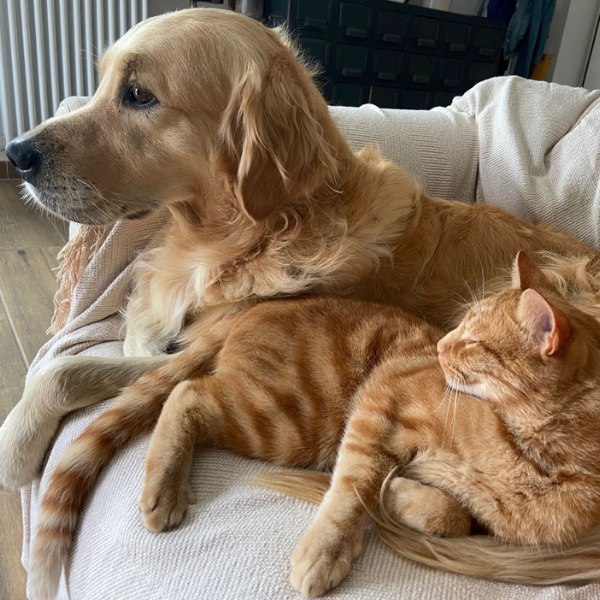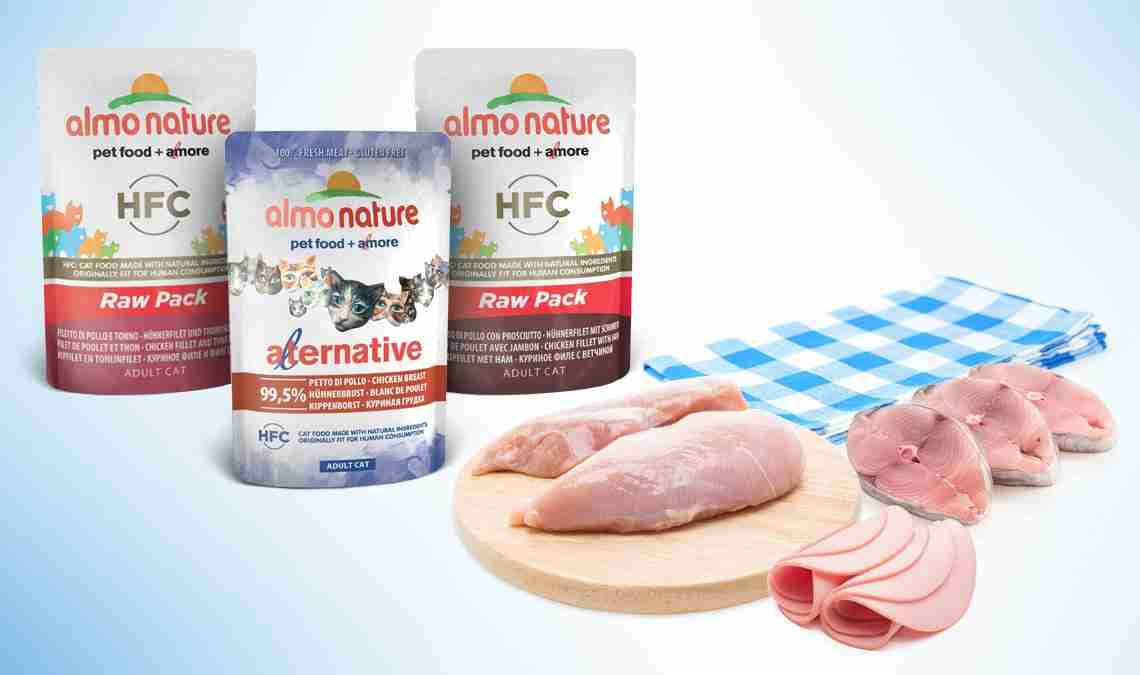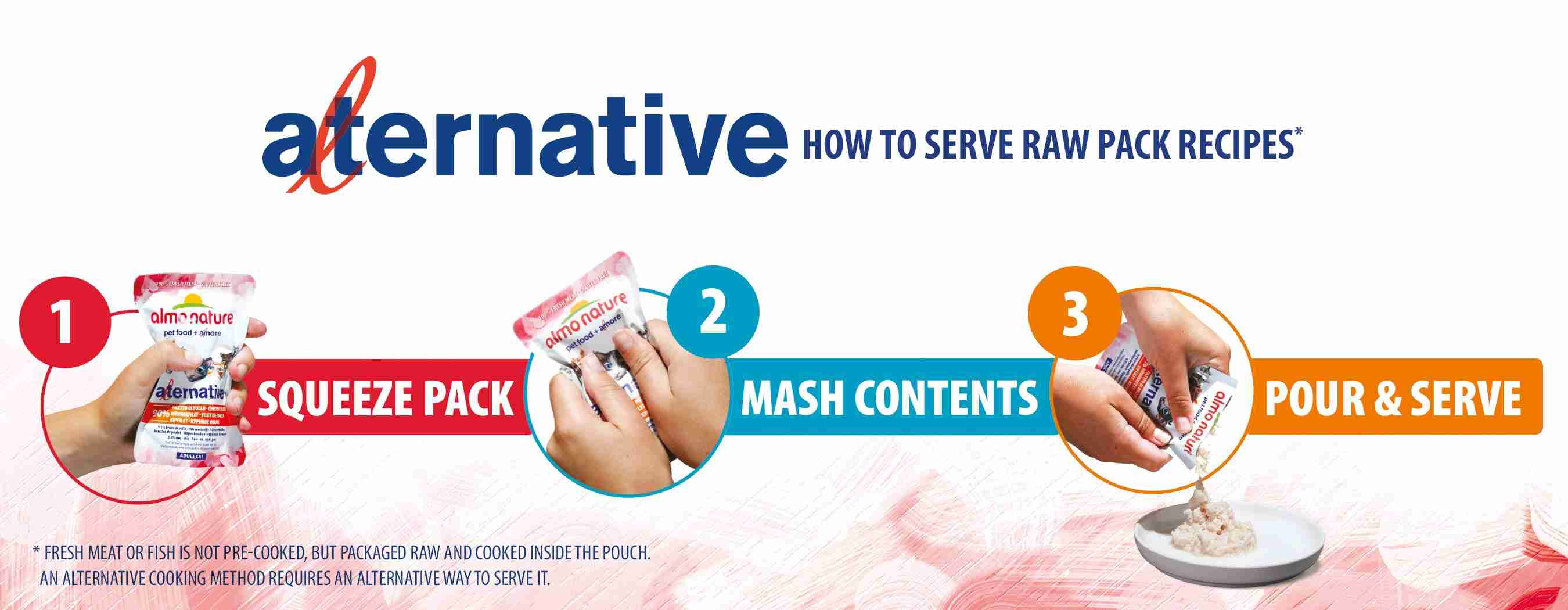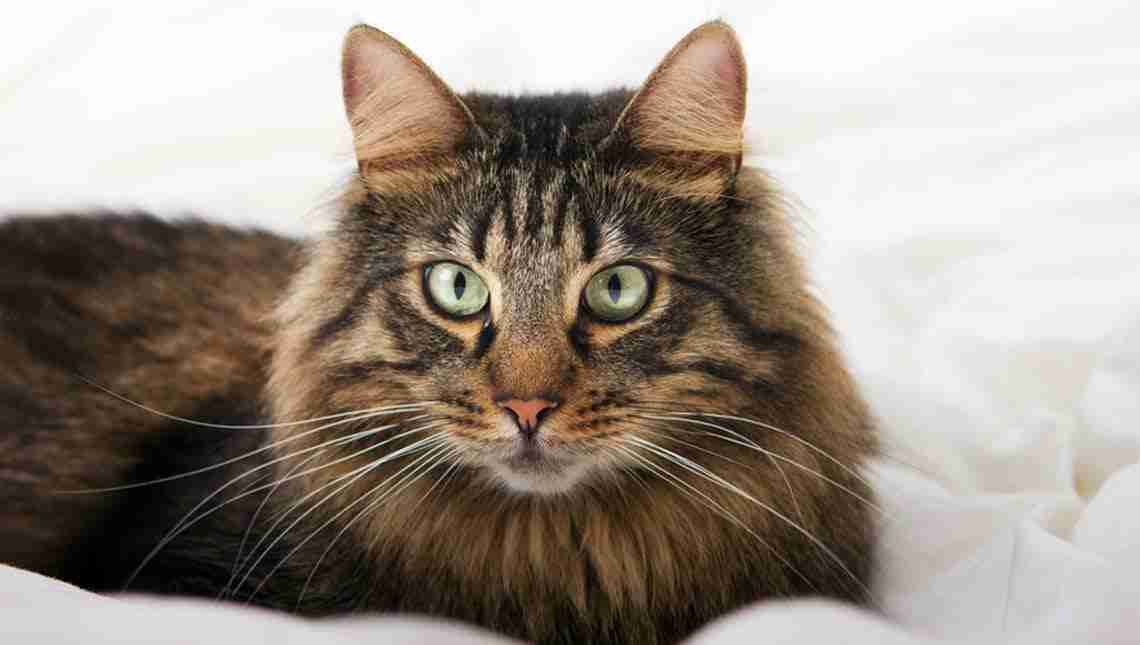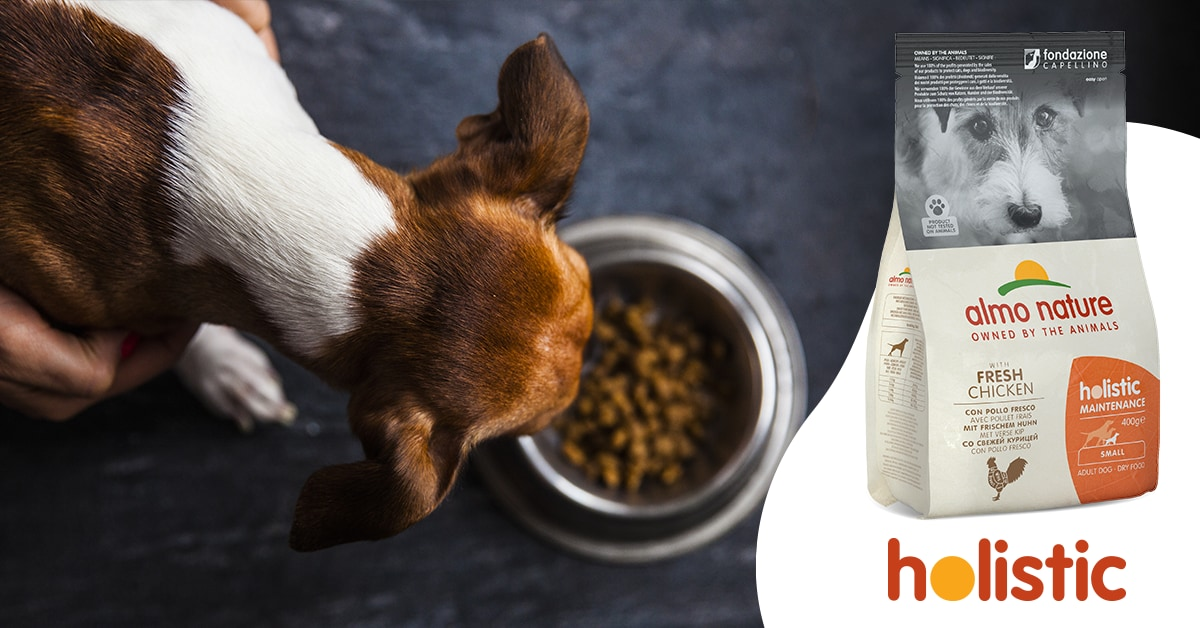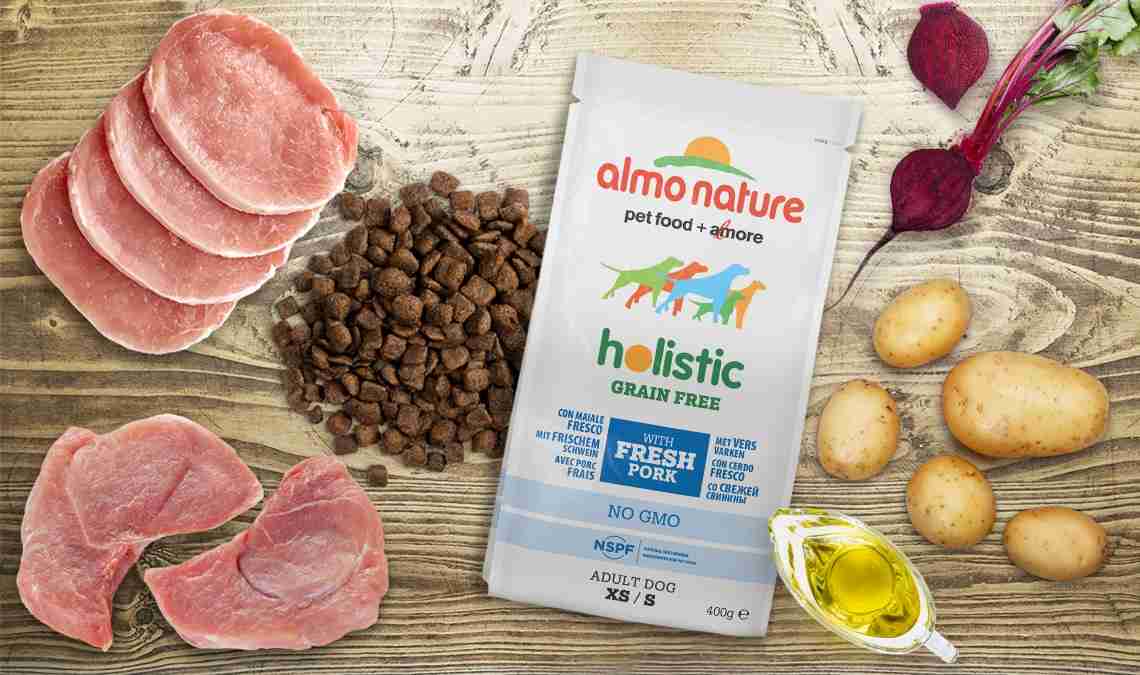HFC petfood: what is it?
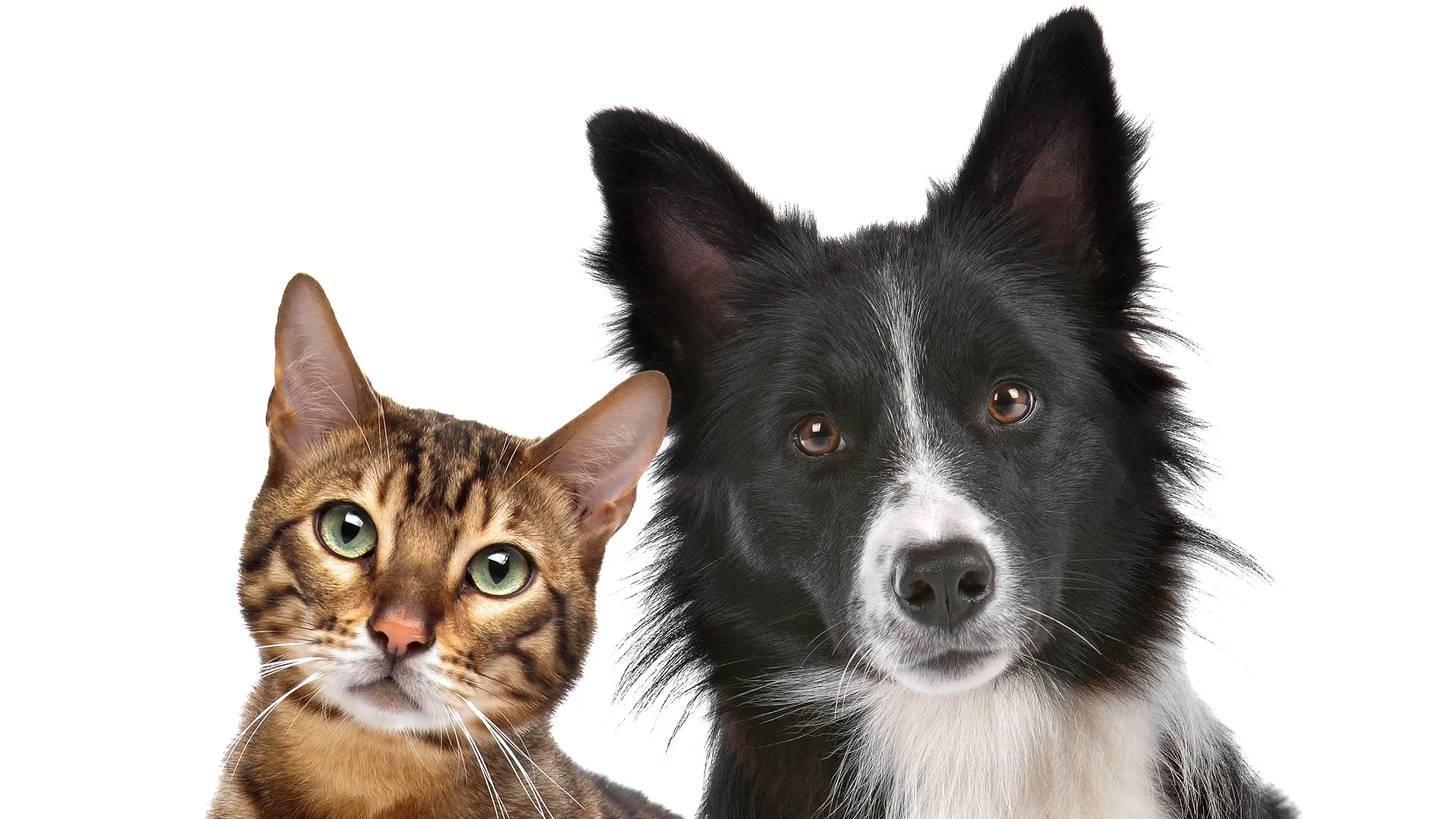
How did pet food end up on our market? Have you ever wondered?
And did you know that although kibble may all look alike, the origin of the ingredients used to prepare them actually makes a big difference, both as to food quality and well-being of our animal companions? Today, we would like to tell you more about which HFC ingredients we choose to use in our recipes and why they make a difference in the nutrition of our dogs and cats, by briefly retracing the history of pet food.
The birth of pet food
There was a time when dogs and cats, whether they lived in gentry stately courts or commoners' homes, were mainly regarded as working animals. Cats would chase away mice and dogs helped people hunt. At that time in history, their nutrition was not a topic of particular concern to human beings. It was the Middle Ages and animal companions were fed whatever scraps were left on the table: bones, onions, kale or cabbage. Far from being a healthy, balanced diet.
It was only after the industrial revolution, when dogs and cats began to be seen less as working animals and more as an integral part of the family, that people began to show concern for their nutrition and health. The years that followed saw great technological changes and signiflcant scientiflc discoveries, also in the fields of veterinary sciences and nutrition. So it came about that around the 1930s, a number of companies decided to invest in the production of industrial (commercial) dog and cat food and identified in slaughterhouse by-products, that is to say, whatever human beings could not eat or would never eat such as less edible offal, but also feathers, hooves and bones, a source of possible “novel” ingredients. Thus animal meal and pet food were born.
Almo Nature’s vision
The emergence of pet food has indeed improved nutrition for our animal companions through the development of complete and balanced food mixes, however, health and well-being inevitably come from healthy eating, which is as true for us as it is for them, and higher quality ingredients than meat industry by-products can objectively supply better nourishment.
“So why not offer them the very same quality I would choose for myself?”
This is the question that Almo Nature asked themselves around the year 2000. It led to far-reaching changes in the feeding regimens of our cats and dogs futher to the decision to rule out slaughter by-products and animal or dehydrated meals, offering, instead, HFC ingredients, originally fit for human consumption and now used in cat and dog food recipes.
.webp?width=4499&height=2531&name=DSC02280%20(1).webp)
HFC Ingredients
HFC is an acronym coined by Almo Nature; it stands for Human Food Chain and identifies the high quality ingredients we use to prepare food for our animal companions, i.e. ingredients that are originally fit for human consumption, and according to Almo Nature's commercial choice are now used in cat and dog food.
We speak of a commercial choice precisely because, in order to prepare HFC food mixes, Almo Nature purchases its ingredients from a different source than pet food, namely from our own food. Which means that initial controls and quality are different from those carried out on pet food industry ingredients.
What Does the Law Say?
To achieve our objective, we have benefited from the current applicable legislation. European regulation 1069/2009, article 10 (a), identifies a specific type of ingredients that are “fit for human consumption, but are not intended for human consumption for commercial reasons”, thus becoming HFC ingredients in Almo Nature dog and cat food.
HFC ingredients therefore undergo different controls, before becoming food for our animal companions, namely, both human food chain controls and all subsequent controls to which pet-food ingredients are subjected. Because of this type of process and controls, they are more costly than pet-food only ingredients.
Advantages of HFC ingredients
HFC food are made from fresh meat and fish ingredients and do not contain meat industry by-products, which are more difficult to absorb and digest and less nutritionally complete.
HFC meat and fish used in our recipes thus ensure high biological value nutrients, such as animal proteins or fatty acids, for better absorption and intake of elements, which dogs or cats need for a healthy diet. They are also more digestible. The origin of the ingredients is therefore important for the purposes of food quality; and eating quality food brings benefits in the long run. Which principle now also applies to our animal companions.
.webp?width=3630&height=2042&name=DSC02720%20(1).webp)
Almo Nature HFC
Answering the question: “why not choose for them the same quality you would choose for yourself”, Almo Nature has invested in the quality of HFC ingredients, which led to the production of HFC wet food and HFC dry food. All recipes are prepared with raw materials of specific type and quality, using more advanced technological and production processes than those employed for pet-food only ingredient products. Because different ingredients require different processing. All of which suggests that also the costs incurred in preparing HFC food are different from those related to pet-food quality products.
HFC dry food
Thanks to technological advances in recent years, fresh ingredients, such as meat or fish, can be used in the recipe to prepare kibble, thus replacing animal and dehydrated meals as a source of protein and increasing digestibility. HFC kibble is prepared with 100% fresh meat or flsh. Thanks to the cold chain, ingredients undergo a single cooking process, which allows nutrients to be better retained than in animal or dehydrated meals. HFC foods are thus more nutrient-dense and digestible.
- Protein digestibility up to 98.93% - Study by Teramo University.
Discover our HFC dry food product lines for dogs and cats.
In conclusion
We can say that dog and cat food can be divided into 2 large families, namely, food prepared with HFC ingredients and pet food! Differring profoundly as to both their origin and preparation, they supply nutrients in a different way.
Besides, Almo Nature does not “only” offer quality food for dogs and cats, it is also an activist brand that devotes 100% of its revenues - after costs and taxes - to the well-being of the Planet, through the projects of Fondazione Capellino, a non-profit businessl entity that owns 100% of Almo Nature. A different economic model called Reintegration Economy.
This means that if you buy Almo Nature products for your animal companion you contribute directly to the preservation of biodiversity and the fight against global warming.
Discover the projects you can support by offering HFC quality to your animal companion. Follow us on social media or sign up for our newsletter to stay up-to-date on projects!

